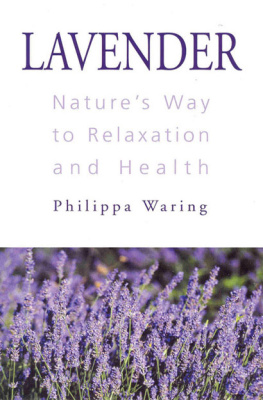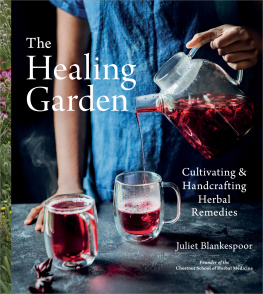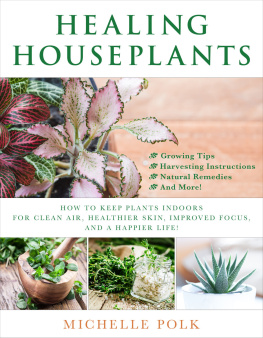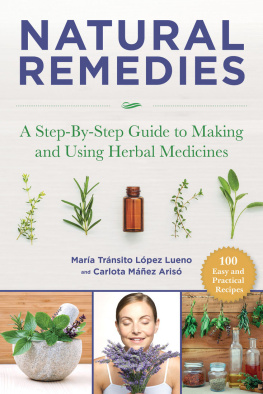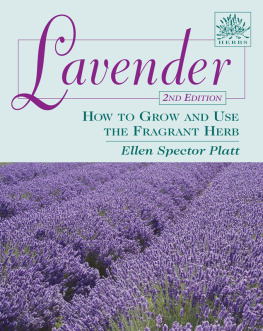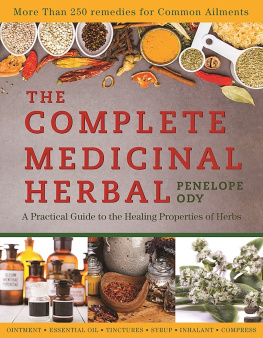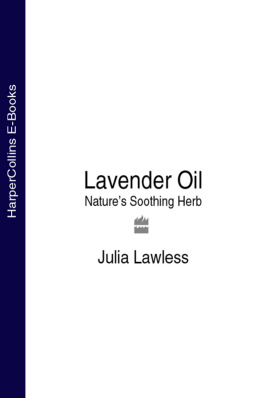Acknowledgements
The author would like to thank Pip Miller who has been generous in her help with information in the writing of this book and also for supplying several of the illustrations which so delightfully enliven its pages. I am also grateful to Dorothy Hall, Sally Cook, Jane Coates, Christine Lawrence, Ann Head and Henry Head for their help with the text. The staff at the London Library, as always, were kindness itself in helping me to locate books and magazines, as were those at the British Museum Newspaper Library in Colindale. I must also express my thanks to the following newspapers for allowing me to quote from their columns: The Sunday Times, The Observer, Sunday Telegraph, Mail on Sunday, Sunday Mirror, The Times, Daily Mail and the East Anglian Daily Times.
Chapter 1
Natures Great Restorer
To many people, lavender is just a typical plant of the cottage garden fragrant and attractive to look at when in full summer bloom. Yet it is also a herb of hidden qualities, with a whole variety of uses to which it can be put in everyday life, health care and even the culinary arts. It is a constant source of surprise, too, as an accidental discovery by a French chemist in 1927 revealed: not only was a new element added to its list of properties, but a form of health treatment was born which now has followers all over the world.
That morning Ren-Maurice Gattefoss was working in his familys perfumery business, testing the essential oils of a number of plants used in the manufacture of the companys products. It was a study that had engaged his attention for several years and had already led to a number of advances in the techniques of distillation and blending. As the chemist worked at his bench a sudden explosion rocked the laboratory. Gattefoss fell back with a cry of pain, clutching at one of his hands which had been badly burned. Almost without thinking, as he later recounted, he thrust the injured hand into the nearest liquid, a container of pure lavender oil. The relief was almost instantaneous, and in the days that followed Gattefoss watched with mounting fascination and interest as his hand healed swiftly and cleanly, leaving no trace of a scar.
By the end of the week the conclusion was inescapable: lavender oil had the power to heal burns. The scientist in Gattefoss made him wonder if any of the other essential oils used in the business had similar healing powers which could make them as effective as, perhaps even more than, their chemical equivalents. He knew well enough from his study that these oils odoriferous liquid components from aromatic plants, trees and grasses which had been extracted by steam distillation were sometimes known as ethereal oils because when they were left in the open air they evaporated without trace and as if by magic. But there was nothing supernatural about what he had stumbled upon, and Gattefoss was convinced that if he could substantiate the fact by further experimentation, a whole new branch of therapeutic treatment might be opened up. Later that year he wrote in what would become a landmark book:
Doctors and chemists will be surprised at the range of odoriferous substances which may be used medically and at the great variety of their chemical functions. Beside the antiseptic and antimicrobial properties of which use is currently made, the essential oils are also antitoxic and antiviral, they have a powerful energising effect and possess an undeniable cicatrising property. In the future their role will be even greater.
Gattefosss words could hardly have been more prophetic. Nor was his contribution quite finished, because in order to describe this use to which essential oils might be put in health care he coined the term aromatherapy, which he also used as the title for his book, published the following year. Today, anyone who practises this branch of complementary medicine should be aware of the debt they owe to the humble lavender plant.
It is probably true to say that most modern gardens of any size contain at least one lavender bush. Some, like my grandmothers, have a whole range of different varieties: I remember that hers looked especially beautiful in the summer months with their purple, blue and pink flowers scenting the garden with their unique, sweet fragrance. The old lady, who died when well into her eighties, had a special fondness for the herb and throughout her home the evidence was there for all to see.
In the winter, for example, she took full advantage of her summer crop of lavender to perfume her little cottage with bunches of the flowers that hung in posies in a number of the rooms. She also used the dried flowers in embroidered lavender bags which kept her cupboards and drawers sweet-smelling and free of moths and other insects. In the bathroom cabinet she had a small, dark blue bottle marked Lavender Oil which she used for emergencies. When, one day, I was stung by a wasp, a couple of drops which she administered to my swollen arm quickly brought relief and stopped my tears. She made up lavender water to cool and refresh herself on hot days, and dab on the neck and hem of her dress so that she seemed to waft through life trailing an unmistakable aroma. When she kissed me, the fragrance of lavender stayed in my nostrils for hours afterwards.
My grandmother also brewed lavender tea which she said was good for headaches and stopped you from worrying, and that would make you live longer. She used cooking apples and lavender to make jars of jelly conserve which tasted absolutely delicious on fresh bread or toast. Occasionally, I remember, she would even hum a little rhyme as she cleaned the house:
Velvet gown and dainty fur
Should be laid in lavender,
For its sweetness drives away
Fretting moths of silver grey.
The mere aroma of lavender, she once confided to me as we sat in her kitchen on a bleak winter morning, provided her with a constant reminder of the drowsy, fragrant days of summer. Not surprisingly, it was from her that I first began to learn some of the secrets of this extraordinary plant and its remarkable properties, as healer, household aid and cookery ingredient. Those properties have made it a boon to mankind since the days of Ancient Rome.
The lavender plant belongs to the family Labiatae and is of the genus Lavandula , indicating that the flowers are tubular and lipped, although they vary in shape and appearance. The range of its varieties is enormous: some types are no more than little shrubs while others form tall and impressive growths as much as five feet high. Because of this, lavender may be grown in solitary splendour, in small groups, or as a hedge to border the garden.
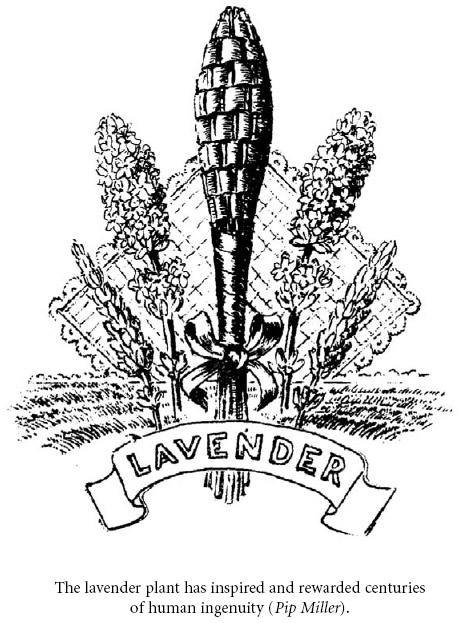
The plant is a xerophyte, which means that it is especially adept at thriving in dry conditions. The coarse, greyish leaves are the giveaway of this quality the greyness actually being a mass of tiny white hairs which are there to hold moisture within the plant. In an article in The Times about the climatic changes taking place in Britain, with the country becoming more Mediterranean, it was reported that tests carried out by the Henry Doubleday Research Association in its gardens at Ryton near Coventry and Yalding near Maidstone, Kent, had revealed that lavender was high on the list of plants that can survive drought and still flower plentifully. This is because it has evolved a strategy to deal with the sun and the consequent risk of desiccation. In addition it has an extensive root system which can go as deep as 75 cm (2ft 6ins).
Originally, of course, lavender grew only in the wild, and it was from its wild form that mankind first began to learn of its herbal benefits. Subsequent interbreeding of the species has produced plants with colours ranging from deepest purple through the traditional lavender to the palest shades of pink and white, and with many different types of leaf shape and texture.

